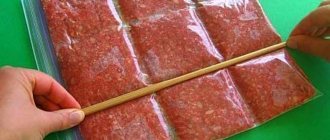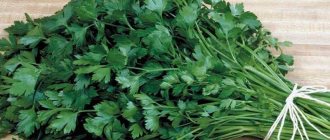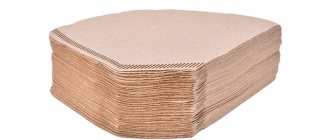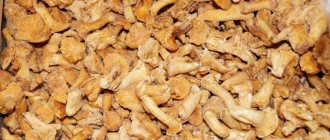Often the taste of prepared foods deteriorates when frozen. Pilaf is one of the few dishes that perfectly retains its taste when frozen. Knowing whether it is possible to freeze pilaf and how to do it correctly, you don’t have to waste time preparing dinner in the future. Both lean pilaf and meat and dried fruits are suitable for freezing.
The main condition for freezing is that the pilaf must be freshly prepared. A dish that was stored in the refrigerator for several days before freezing will have an unpleasant aftertaste when defrosted.
How to freeze pilaf
Pilaf is one of the dishes that is ideal for freezing. It is very convenient to prepare 4-5 liters at a time. pilaf and freeze half of it to save time in the future and have a hearty and tasty homemade dish in stock.
Pilaf for freezing should only be fresh, that is, just cooked or one that has been in the refrigerator for no longer than one day. After defrosting, such pilaf will not differ from freshly prepared one.
You can freeze pilaf with chicken, pork, beef, lamb, lean pilaf with mushrooms, sweet pilaf with dried fruits, etc.
After cooking, you need to let the pilaf cool to room temperature.
Next, pack the pilaf into containers or bags.
You can freeze pilaf in glass and plastic containers, ice cream buckets, jars, etc. (when using plastic containers, make sure that it is intended for this purpose, carefully look at the labeling).
It is advisable not to fill the container to the top with pilaf (there should be approximately 1 cm of free space in the container or jar) so that it does not crack, since the product may increase in volume when frozen.
If you don't have much space in your freezer, you can freeze the pilaf in a thick plastic bag, shaping it into a flat or other convenient shape for storage.
It is also convenient to freeze pilaf in portions, for example, 2-4 servings, so that after defrosting you can eat it without any residue.
So, when using containers for freezing, they need to be closed with a lid, placed in a bag or wrapped in several layers of cling film.
If the pilaf is frozen in a bag, you need to release the air from it (you can see how to do this here), carefully close it and put it in an additional bag.
Be sure to attach a label indicating product information, for example, “Chicken Pilaf, 2 servings,” and the freezing date.
This preparation should be placed in the refrigerator for 2-3 hours so that the dish is well cooled.
If the pilaf was already in the refrigerator before, there is no need to cool it further and you can immediately put it in the freezer.
Place the pilaf in the freezer, the temperature in which should be -18 degrees or lower.
The shelf life of pilaf is 3 months at -18 degrees.
There are several ways to defrost pilaf:
1. Transfer the pilaf from the freezer to the refrigerator for about 8-10 hours, depending on the volume. When the pilaf is defrosted, reheat it in a way convenient for you, for example, in a frying pan or in the microwave.
2. Defrost in a microwave oven using the “Defrost” mode, then you can reheat it in the same mode using the normal mode.
3. Defrost in a frying pan: pour frozen pilaf from the bag into a cold, dry frying pan, turn on low heat, add 2-3 tablespoons of water, close with a lid and hold for 5-7 minutes, then carefully mix the contents of the frying pan with a spatula and heat until hot. This method is suitable for defrosting pilaf that was frozen in a bag, since getting the frozen food out of the container will be problematic due to the fact that the pilaf will freeze to the walls of the container.
After defrosting, the pilaf may become drier and crumbly; in this case, when heating the pilaf, it is recommended to add a few tablespoons of water or broth.
Re-freezing pilaf is not recommended!
After defrosting, you can store pilaf in the refrigerator for about 2 days.
Slicing carrots for pilaf - 3 ways
Traditionally, for pilaf, carrots taken from the autumn harvest are medium-sized, cylindrical in shape and cut into coarse strips or cubes approximately 4–5 millimeters thick.
They do this manually, because combines and other devices ruffle the edges, which is why the vegetable loses its shape under the influence of temperature and becomes brittle.
There are three ways to properly cut carrots:
- Peeled carrots are cut into cylinders (“hemps”) no less than 4 centimeters high. Now they need to be cut into plates. To do this, you can either hold them vertically, or thinly cut off one rounded side and lay the “stump” with the resulting flat part down. The plates are stacked in 2-5 pieces - depending on the chef's skill - and cut into strips along the long edge.
- The carrots are cut into cylinders and plates similarly to the first point, then cut diagonally. This method is preferable for long straws; they will be more flexible and will not break during heat treatment.
- The roundness of a whole carrot is carefully cut off on one side so that it can be placed firmly on the board. Then cut diagonally into ovals of at least 4 cm in length. The ovals are stacked and chopped into strips.
It is believed that the longer the straw, the tastier the pilaf.
Ancient tricks for cooking pilaf
Sunday, April 21, 2021
Cooking real oriental pilaf is a special art that requires not only culinary flair, but also a good knowledge of the technological features of preparing this dish. It is known that the taste and quality of pilaf will depend on the correct preparation of zirvak, but few people know that zirvak can be prepared for future use, as it was done in the old days.
To prepare delicious pilaf, a good cook needs to get used to the idea that this dish does not tolerate haste and fuss.
There is not a single stage of preparing pilaf that could be ignored: calcination of the oil (fat), the order in which the ingredients are added, and the peculiarities of preparing zirvak - all this requires attention. As for zirvak, the longer it simmers over low heat, the tastier the pilaf turns out. So, for example, when preparing classic Fergana pilaf, which is usually made in Uzbekistan by men at culinary competitions (only males can take part in them, although pilaf is usually prepared by women at home), zirvak is prepared for 50-80 minutes, this is the a minimum that provides pilaf with good taste and quality. Help for the uninitiated: first, onions, meat and carrots are placed in calcined oil or fat for frying.
Then all this is filled with water and stewed with the addition of salt and spices - this base of the dish is called zirvak. After it is ready, rice is placed in the zirvak, filled with water and cooked: first without a lid, then for another 20-25 minutes under it. So, one of the ancient ways to make your kitchen work a little easier and reduce the time it takes to prepare pilaf is to save zirvak for future use. In the old days, this method was also widespread because without refrigerators it was difficult to preserve food in proper quality, so a kind of canning was the best way out.
How to prepare zirvak for future use
Traditionally, zirvak is prepared during the cooler days: from approximately November to April.
The old recipe is designed to prepare one serving: 200 g of rice, 200 g of meat pulp (preferably lamb), 70 g of lard, 200 g of carrots, 100 g of onion, spices (cumin, barberry, ground red pepper, ground coriander) - a pinch , salt to taste. The meat is cut into slices, the onion into rings, sprinkled with spices and salt, mixed and put in a cool place for a day to marinate the meat. The next day, heat the cauldron, melt lamb fat in it, cut into cubes of about 1 x 1 x 1 cm, then take out the cracklings and heat the fat for about another half hour. Then reduce the heat, place onions and meat in hot fat, and fry them until half cooked. Then cut the carrots into cubes, add them to the meat and onions and fry until all the ingredients are ready. Remove the cauldron from the heat and cool naturally to room temperature. After this, the zirvak is transferred to a clean ceramic dish or enamel pan with a very tight lid and the workpiece is stored in a cool place. As mentioned in printed sources, such preparation for pilaf can be stored for up to two months, and even longer in the refrigerator. This durability is ensured by fat - when it hardens, it creates a very dense, almost airtight layer on top of the meat and carrots. Further use of zirvak is as follows: put a portion of zirvak into a heated cauldron (depending on the number of people dining), let it boil, then add a layer of washed rice and fill it with water. The taste of the finished dish is very similar to Fergana-style pilaf, but somewhat fattier. Fergana style pilaf (recipe from 1979, brought from Uzbekistan) Tags: Ancient cooking











